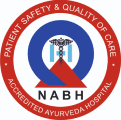



In the Ayurveda system of medicine, a condition known as Mamsa Kshaya or Sosha can be considered as the wasting of muscles, wherein Mamsa means muscles and Kshaya or Sosha refer to loss or reduction. This condition occurs due to the aggravation of Vata dosha affecting the Sapta Dhatus or tissues during the growth phase. Emaciation of muscular parts, enlargement of joints, visibility of bones and vessels, and intolerance to physical exercise, strain, or work indicate Mamsa Kshaya or Sosha in a person. At AyurVAID, our goal is to improve the condition and arrest further disease progression. Our Ayurveda treatment protocols focus on medicines along with physical, and occupational therapies that strengthen and stretch muscles. Panchakarma therapies can help to retain function and range of motion.
At AyurVAID, our doctors take a detailed medical history of your presenting complaints, past medical conditions, and diet and lifestyle information. Unlike other conventional clinics, emphasis is given to spending more time analyzing each patient’s case and accurately finding out the root cause of the health condition. This helps decide the further action to design a detailed Ayurveda health management plan.
Ayurveda medical care is available to you on cashless or reimbursement basis at AyurVAID Hospitals, supported by all leading health insurance companies and Third Party Administrators (TPAs).
AyurVAID’s precision Ayurveda approach ensures systematic diagnosis and treatment of the root cause of any chronic disease. This ensures the best probability of a permanent solution through a Ayurveda
AyurVAID stands out as a prominent institution with the best Ayurvedic doctors in India. AyurVAID has been recognized and honored with prestigious awards for its exceptional contributions in the field of Ayurveda.
AyurVAID is India’s 1st Ayurveda hospital to be accredited by NABH (National Accreditation Board for Hospitals & Healthcare Providers), Quality Council of India.